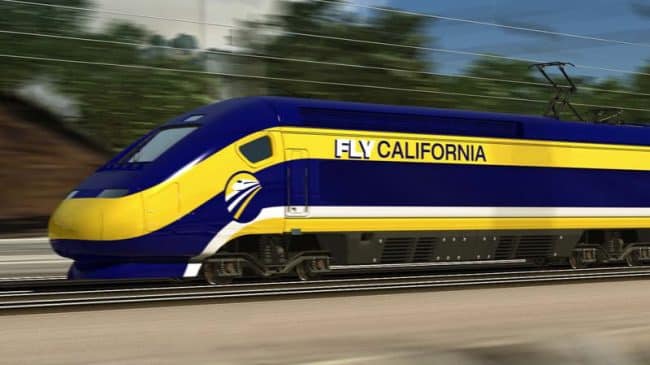The 14 Republicans representing California in Congress recently asked the Department of Transportation to delay approval of a federal grant, which would provide indirect funding to California’s high-speed rail line, until an audit of the proposed high-speed system’s finances is completed. Transportation Secretary Elaine Chao agreed, putting off the decision on awarding the $650 million federal grant for electrification of a Caltrain’s Bay Area commuter rail system.
The upgrade, from diesel trains to electric trains on a section of rail between San Jose and San Francisco, has been in the works for 18 years. But the electrification is also now needed for the high-speed rail system to connect San Jose to San Francisco, which ultimately put this funding in limbo.
In normal political circumstances like this — with a Republican president and GOP control of Congress — it wouldn’t seem likely that the federal government would be sending California federal taxpayer money for this or other high-speed rail projects anytime soon.
But these aren’t normal times. Before a recent meeting with executives from major airlines, President Trump complained that America doesn’t “have one fast train.” Trump has promised a $1 trillion infrastructure plan that has yet to be fleshed out.
Japanese Prime Minister Shinzo Abe even made a pitch for high-speed rail technology to Trump. “With the latest magnetic technology from Washington, D.C., up to New York where Trump Tower exists, only one hour would it take if you ride the MagLev train from Washington, D.C., to New York,” Abe said.
With the uncertainty around Trump, Congress and the future of high-speed rail funding, the state’s ongoing revisions to the train’s business plan amount to moving the deck chairs on the Titanic because they don’t solve the fundamental problems: lack of funding, cost-overruns, delays and mismanagement.
The Los Angeles Times recently obtained a report by the Federal Railroad Administration that found the first 118 miles of high-speed rail track in the Central Valley “could cost taxpayers 50 percent more than estimated” and may already be “seven years behind schedule.”
That’s the area of the train system — Merced to Shafter — that was supposed to be the easiest and cheapest to build. Imagine the cost overages and delays when the project gets to urban areas in San Francisco or Los Angeles.
The California High-Speed Rail Authority disputed the story and says its upcoming March 2017 report to the Legislature will show the spending is for “additional features” and demonstrate the project is making progress.
It’s going to be impossible, however, for the rail system to live up to its lofty promises on construction costs, ticket prices or ridership. Killing the project entirely before larger amounts of money are poured into it is probably the best taxpayers could hope for. But that’s not likely to happen on Gov. Jerry Brown’s watch. Brown has been committed to creatively diverting money to the rail system and will continue to do so.
So California should take a cue from President Trump, who has called for increased private-sector investment in infrastructure projects, and explore whether or not there are standalone sections of a high-speed rail system that make financial sense for private companies.
Private-sector money was supposed to flow into the state for this project but it hasn’t. Given Trump’s push for private infrastructure investment, companies might be willing to revisit or study the issue if they’re given the freedom to choose the route and technology they believe could be most desirable to customers, and thus potentially profitable. That would likely mean a truly high-speed train, running at over 180 miles per hour, between Los Angeles and San Francisco. Without a detour into the Central Valley, a high-speed train connecting Southern California and the Bay Area might be able to produce travel times that attract customers who would otherwise drive or fly.
It’s unlikely companies will find a way to make high-speed rail in California a profitable proposition, but it’s worth a shot since the status quo is so much worse — continued mismanagement, construction delays and billions of wasteful spending.
Baruch Feigenbaum is assistant director of transportation policy at Reason Foundation.

